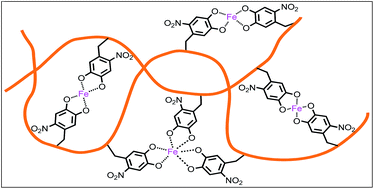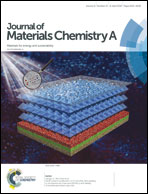Mussel-inspired healing of a strong and stiff polymer†
Abstract
Self-healability will greatly improve the reliability, service life and maintenance of synthetic materials. However, it remains a big challenge to realize the self-healing of a strong and stiff polymer due to its poor molecular mobility. Inspired by the hardness and self-healability of the cuticle of mussel byssal threads, here we demonstrate that a stiff and strong polymer can heal itself through dynamic metal–ligand interactions. The polymer is comprised of nitrocatechol-substituted chitosan cross-linked by catechol–Fe complexation, which exhibits a tensile strength (63.6 ± 2.2 MPa) and an elastic modulus (862.6 ± 31 MPa) comparable to or even better than those of common engineering plastics. When subjected to multiple physical damages, the stiff polymer is able to recover its configuration integrity and mechanical properties autonomously via pH-induced coordination between Fe3+ and the catecholic moiety. Moreover, the polymer also exhibits interesting renewability, flame retardancy and solvent-tolerance. The application of the polymer is demonstrated by a weight-bearing test. Our investigation offers a bio-inspired strategy to design healable rigid polymers that have potential applications in various technological fields.



 Please wait while we load your content...
Please wait while we load your content...